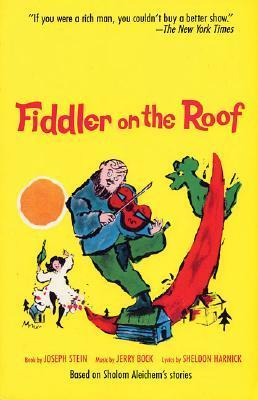TL;DR
Fiddler on the Roof is a poignant musical that explores the lives of a Jewish family in early 20th-century Russia, grappling with tradition and change amidst societal upheaval.
What is Fiddler on the Roof about
Fiddler on the Roof, created by Joseph Stein with music by Jerry Bock and lyrics by Sheldon Harnick, is a beloved American musical adaptation of Sholem Aleichem's stories about Tevye the Dairyman. Set in the small village of Anatevka, the narrative revolves around Tevye, a Jewish milkman, who faces the challenge of maintaining his cultural traditions while his daughters seek to marry for love rather than adhere to arranged marriages. The musical is not only a portrayal of Jewish life and customs but also highlights universal themes of family, love, and resilience amid the shifting tides of change. The rich blend of humor and heartwarming moments makes it a timeless classic that resonates with audiences.
Fiddler on the Roof 5 Key Takeaways
Introduction of Tevye and His Family
The story begins with Tevye, a hardworking dairyman, introducing his family and the village's traditions. He reflects on the importance of customs in their lives.
Daughters' Marriages
As Tevye's daughters grow up, they each fall in love with men who do not fit traditional expectations, challenging Tevye's beliefs and priorities.
Conflict with Tradition
Tevye faces the struggle of adhering to tradition while supporting his daughters' choices, leading to tension within the family.
Anti-Semitic Tensions
The political backdrop of Imperial Russia brings rising anti-Semitism, threatening the lives and livelihoods of the villagers.
Tevye's Final Decision
Ultimately, Tevye must make a heartbreaking decision about his family's future in the face of societal changes and personal sacrifices.
Top Fiddler on the Roof Quotes
- "Without our traditions, our lives would be as shaky as a fiddler on the roof."
- "Tradition! Without our traditions, our lives would be as shaky as..."
- "I don't know what the future holds, but I know what I believe in."
Who should read Fiddler on the Roof?
Fiddler on the Roof appeals to theater enthusiasts, lovers of musical narratives, and those interested in Jewish cultural history. Readers can expect to find inspiration in its exploration of familial bonds and the courage to embrace change.
Fiddler on the Roof Best Reviews
- "Fiddler on the Roof is a work of art—darling, touching, beautiful, warm, funny and inspiring." – John Chapman, Daily News
- "A musical that resonates with the human condition, bridging the gap between tradition and modernity with grace and humor." – The New York Times
- "An all-time classic that captures the essence of cultural identity and familial love in the face of adversity." – Variety
People also liked these summaries
Fiddler on the Roof FAQs
What is the true story behind Fiddler on the Roof?
Fiddler on the Roof is based on the stories of Tevye the Dairyman, written by Sholem Aleichem about Jewish life in Imperial Russia during the early 20th century.
Is Fiddler on the Roof based on a book?
Yes, Fiddler on the Roof is adapted from Sholem Aleichem's anthology of stories entitled Tevye and his Daughters.
What are the main themes of Fiddler on the Roof?
The main themes include the tension between tradition and change, the impact of societal shifts on family dynamics, and the enduring importance of cultural identity.
